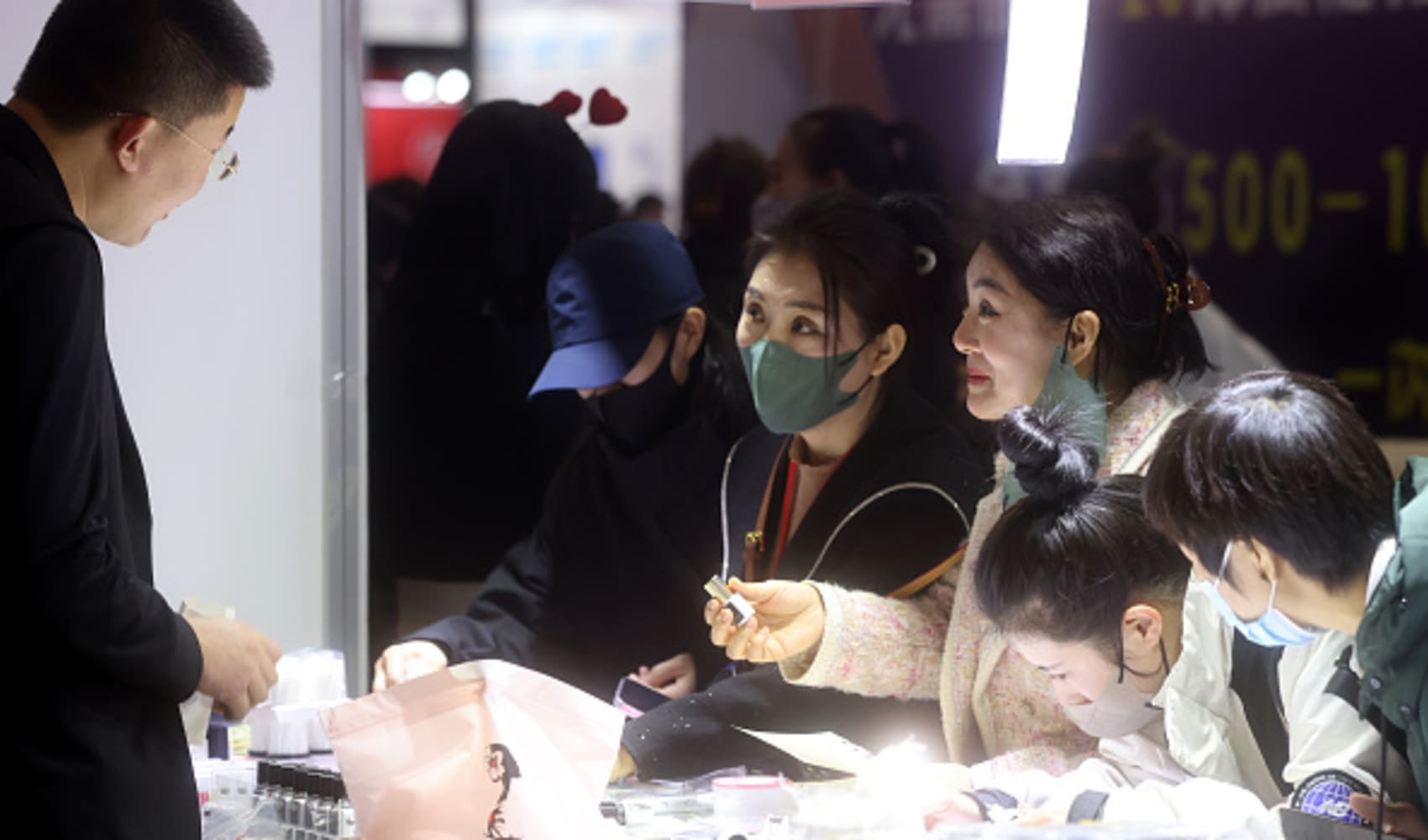- jiliko. live
- Published: 2025-01-08Source: jiliko. live
Summary Tips: jiliko. live is referred to as China News Service Guangxi Channel and China News Service Guangxi Network, which is the first news website established by the central media in Guangxi. www jiliko com app Overall positioning: a comprehensive news website with external propaganda characteristics, the largest external communication platform in Guangxi. jiliko game login Provide services for industry enterprises, welcome to visit jiliko. live !

 jiliko. live
Referee David Coote will not appeal against termination of contract
jiliko. live
Referee David Coote will not appeal against termination of contract
TORONTO — Canada's main stock index ended Tuesday narrowly in the red, weighed down by losses in energy and base metals stocks, while U.S. markets moved higher. Investors digested the latest news from U.S. president-elect Donald Trump, who threatened sweeping new tariffs of 25 per cent on products from Canada and Mexico. The “sizable” tariff promise likely shocked markets somewhat right off the bat, said Mike Archibald, vice-president and portfolio manager with AGF Investments Inc. “But I think as people have kind of digested they've thought that this is probably a starting position from a bargaining standpoint,” he said. The announcement was in line with Trump’s tactics used during his first presidency, said Archibald. The S&P/TSX composite index closed down 5.21 points at 25,405.14. In New York, the Dow Jones industrial average was up 123.74 points at 44,860.31. The S&P 500 index was up 34.26 points at 6,021.63, while the Nasdaq composite was up 119.46 points at 19,174.30. A few Canadian companies saw their share prices drop because of the outsized impact such a tariff could have on certain sectors, said Archibald. These included Bombardier, BRP, Linamar and Magna International. “You can see the biggest losers on the market today are generally those that manufacture in either Canada and/or Mexico,” he said. But higher tariffs could also be inflationary for the U.S., said Archibald. Markets have been paring back their bets for interest rate cuts in the U.S. in the wake of the election in anticipation of potentially higher inflation. “It’s a bit too early to know,” said Archibald. Despite the uncertainty, he said markets are still poised to do well in the coming months thanks to Trump’s overall pro-business bent. “I still think the market is in a very good position to rally ... into the end of the year,” he said. “The S&P 500 is still going to do fairly well relative to other markets around the world.” The loonie fell to a four-year low before clawing back some of its losses later in the day, he noted. The Canadian dollar traded for 71.01 cents US compared with 71.53 cents US on Monday. The January crude oil contract was down 17 cents at US$68.77 per barrel and the January natural gas contract was up three cents at US$3.47 per mmBTU. The December gold contract was up US$2.80 at US$2,621.30 an ounce and the March copper contract was down four cents at US$4.12 a pound. — With files from The Associated Press This report by The Canadian Press was first published Nov. 26, 2024. Companies in this story: (TSX:GSPTSE, TSX:CADUSD) Rosa Saba, The Canadian Press
Coming off what was likely a week's worth of intense practices, No. 10 Kansas returns home for a matchup with North Carolina State on Saturday afternoon in Lawrence, Kan. The Jayhawks (7-2) lost back-to-back games versus unranked opponents, the first time in school history that they have done that while ranked No. 1. Now they have to regroup to face the Wolfpack (7-3). Kansas lost its first two games of the season emphatically: 76-63 at Creighton on Dec. 4 and 76-67 at Missouri last Sunday. Coach Bill Self, who has only lost three straight games four times in his 21-year career at Kansas, was pretty succinct about his team's play following the loss to Missouri. "I think it was probably a combination of them being good and us not being good," he said. "I don't know that I could give them 100 percent credit, but that's what happens in sports. When the other team is doing things to hurt you, and you don't attack it well, they guard you the same way. "A lot of times you just roll it straight because of just not being as prepared or ready. I think it was a combination of both. I would err on the side of giving them more credit, because if I just say we sucked, that would take credit from them. We did suck, but it was in large part them." The Jayhawks still have a balanced and experienced attack, led by seniors Hunter Dickinson (15.0 points per game), Zeke Mayo (10.9), Dajuan Harris Jr. (10.7) and KJ Adams Jr. (9.8). Their biggest problem against Missouri was the 22 turnovers. "It's been a crap week for all of us," Self said on his weekly radio show Tuesday. "But hopefully we get an opportunity to bounce back. "I'm not going to make any excuses. If you don't perform the way we didn't perform, there certainly can be some valuable things to learn from that hopefully will give us a chance to win the war and not just the battle." NC State has won back-to-back games, including the ACC opener against Florida State on Dec. 7. In their last game, the Wolfpack handled Coppin State 66-56 on Tuesday. That's not to say NC State coach Kevin Keatts was impressed. "I thought we did a terrible job at the end of shot clocks when they were going to take a bunch of bad shots but we fouled them," Keatts said. "That being said, you can learn a lot from a win instead of a loss. "We compete hard every day, and our energy is always high. With this group, I'm trying to get everyone to be consistent." The Wolfpack has a trio of double-digit scorers, led by Marcus Hill (13.0 ppg). Jayden Taylor adds 12.5 and Dontrez Styles chips in 10.6. Ben Middlebrooks (9.2) and Brandon Huntley-Hatfield (8.7) round out the top five. Huntley-Hatfield (5.6 rebounds per game) and Styles (4.6) also lead a balanced rebounding attack. The Jayhawks have won 12 straight games in the series with North Carolina State. --Field Level MediaThe intention of this paper is to indicate the pathway that Si Lanka could take to achieve prosperity and poverty alleviation, as suggested by my Sinhala book titled ‘Directing the Sri Lankan economy on to a correct path’ published a couple of months ago. See the given figure. As shown in the figure, the economic development process of a country like some of those in South East Asia starts from the establishment of an enabling environment of political stability actively promoted by a dynamic leader. Table 1 shows how the Foreign Direct Investment (FDI) attracted by some of the countries of South East Asia, unlike in Sri Lanka (SL), enabled by their capital, technologies, skills and international market access, that has apparently boosted exports, which in turn have created jobs that have helped to reduce poverty. Similarly FDIs are needed for the development of Sri Lanka as its savings are small (about 29% per year), it does not have sufficient advanced skills, technologies and adequate international market access for its goods and services. But FDI inflows to SL have been minimal when compared to the other countries mentioned in Table 1. It appears that FDIs most probably have deliberately avoided investing in SL mainly due to the poor political instability prevailing in the country from about 1956. Political instability can be described as conditions prevailing in the country including the absence of ethnic unity, the rule of law and leaders capable of correcting such a situation. So it is up to the Government to resort to even changes to the constitution to correct this situation to be capable of attracting FDI. Macroeconomic stability exists when key economic relationships such as government’s revenue and expenditure are in balance, inflation is low, investment is positive, public debts especially foreign debts are low, there is a positive balance of payments and when the economy is growing, etc. Sri Lanka’s position has been negative much of the time with regard to all these economic features. In other words macroeconomic stability has been absent in SL, so that Economic development and poverty alleviation have failed. So much so that the International Monitory Fund (IMF) has been called in to help. Productivity measured in output per man hour is the relationship between the output of an economic unit and the factor inputs such as labour, capital and technology, that have been included in producing that output. An example is that if it takes 10 workers to assemble a car within 10 days using simple instruments such as spanners, it would be possible for the same 10 workers to produce 10 cars per day if they are supplemented by using modern technological instruments such as an assembly line with automatically controlled machines. In fact Michael E Porter, the author of the book “The Competitive Advantage of Nations” says “The only meaningful concept of competitiveness at the national level is national productivity”. It should be added that the main contributors to the productivity of a nation are its private sector firms as their management is more efficient than that of its state owned enterprises especially in Sri Lanka. So the Government has to encourage the private sector firms to compete among themselves so that prices could come down and quality along with productivity can be improved. Table 2 shows per worker labour productivity of selected Asian nations and Sri Lanka mentioned in Table 1 in American $ pertaining to the year 2020 and their International Competitiveness for 2022. So far SL has not made an effort to be a major exporter of products and services to earn considerable foreign exchange to meet its own needs and for inputs but also for payment of our foreign debts. Instead it has sought to protect its enterprises by imposing high import duties. But now has apparently realised it needs to export in a big way by not only lowering import tariffs gradually but also by formulating an export development strategy of converting its goods and services for meeting the needs of consumers abroad in competition with existing suppliers from other nations. An essential part of this strategy is creating political stability by leaders to enable the attraction of FDI. See Table 1 which shows how this has happened in some East Asian nations in comparison to SL. See also the high level of productivity and competiveness of these nations in Table 2. It may be noted that the competitiveness of a nation is arrived by dividing the average wage in that country by the rate of productivity of the same country. The path to prosperity of Sri Lanka starts from political stability to enable it to attract mainly FDI as it lacks the capital, skills, technologies and the required international market access to start an export-led strategy of economic development to achieve higher growth and reduce poverty. In this strategy it is important to emphasise on promoting especially the productivity (of the private sector, (which has been described as the ‘the engine of growth’) apart from upgrading the macroeconomic stability of the country and the international market access as shown in the given figure.



